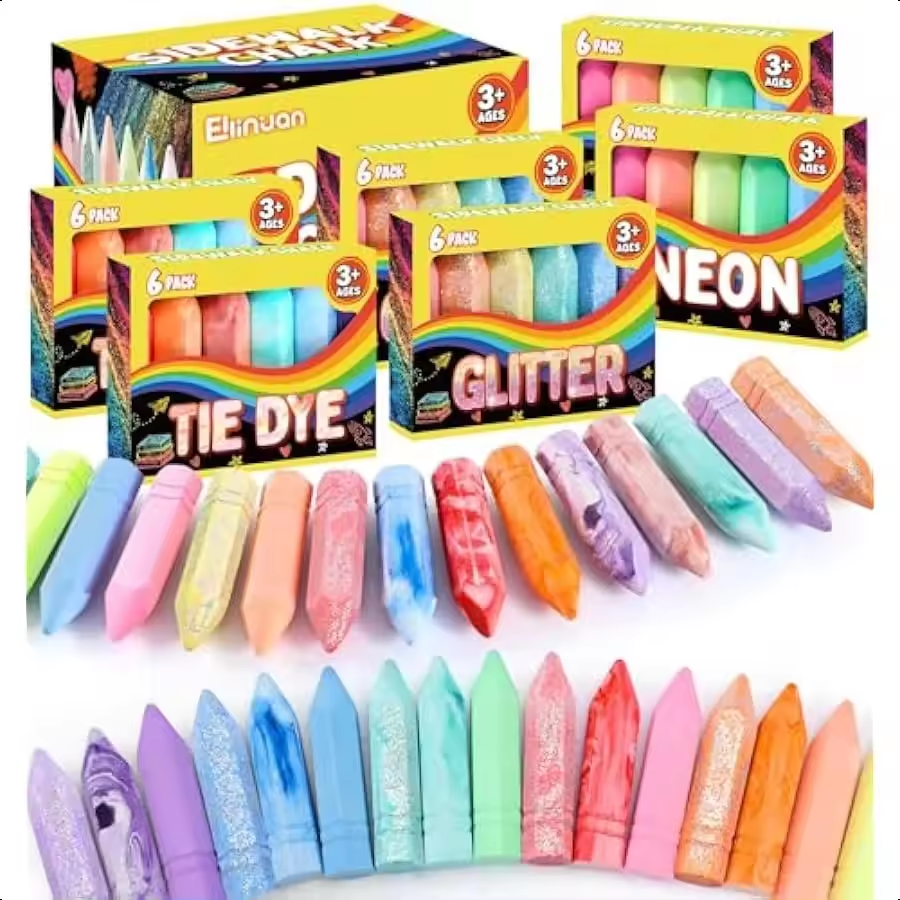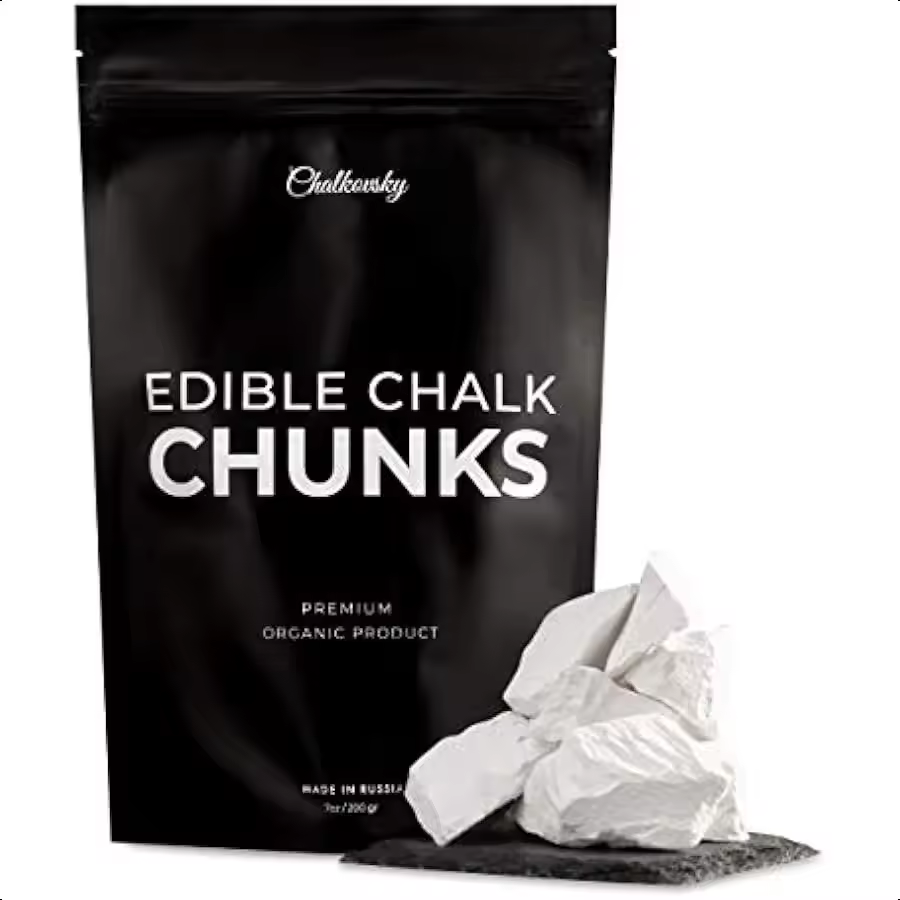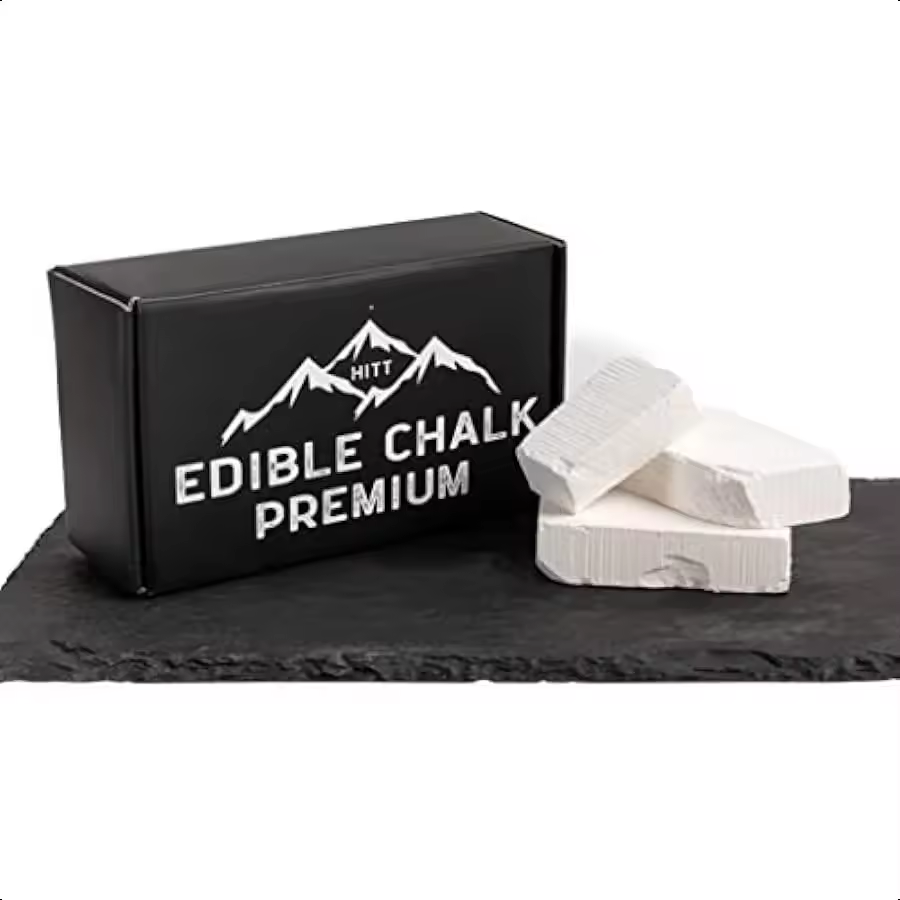What Is Edible Chalk?
Edible chalk is a unique product different from regular chalk. It is designed specifically for consumption. Its use is seen primarily in cultural, health, or culinary contexts. Unlike non-edible chalk, it contains safe and natural ingredients suitable for ingestion.

Composition and Types of Edible Chalk
Edible chalk is made from natural calcium carbonate. This compound naturally occurs in limestone, seashells, and some rocks. It is processed and purified to ensure safety for human consumption. Some edible chalks may also include minerals or natural additives to enhance texture or flavor.
There are different types of edible chalk. The most common is white chalk, known for its smooth texture. Clay-based chalk is also available, offering a slightly gritty consistency. Flavored varieties exist as well, often mixed with fruity or herbal ingredients. Each type serves different preferences and needs.
Differences Between Edible and Non-Edible Chalk
Edible chalk is safe for consumption, while regular chalk is not. Non-edible chalk often contains synthetic chemicals like binders and dyes, which can harm the body. Its primary purpose is for writing or art, not ingestion.
Another difference is texture and taste. Edible chalk has a softer structure suitable for chewing or dissolving. Non-edible chalk is harder, with an unpleasant bitter taste. Always ensure packaging claims “food grade” or “edible” before consuming chalk products.
Cultural and Regional Use of Edible Chalks
Edible chalk has cultural and regional significance worldwide. It is used differently based on traditions, beliefs, and purposes. Communities have integrated edible chalks into their daily lives for centuries.
Popularity in Different Countries
Edible chalk is popular in Russia, Nigeria, and other parts of Africa. In Russia, it is mainly consumed for its perceived health benefits or as a craving remedy. Many people purchase it from local markets as a snack.
In Nigeria, edible chalk holds cultural importance. It is tied to traditional practices and rituals. Women often consume it during pregnancy or for digestive reasons. Its availability in markets makes it a common choice in many African communities.
In the United States and other Western countries, edible chalk is less common. However, it is sometimes used for niche health remedies or culinary experiments. People buy edible chalks online in these regions due to limited local availability.
Traditional Practices and Beliefs
In various cultures, edible chalk has symbolic meanings and traditional uses. Pregnant women in some African and Asian countries consume it for spiritual well-being. This practice is believed to help with cravings and pica disorders.
In tribal and rural communities, edible chalk is linked to ancient remedies. People consume it to soothe digestion or address calcium deficiencies. Its use often ties back to natural medicine practices from generations ago.
Edible chalk is also part of local rituals and special ceremonies. Some communities integrate it into offerings or symbolic traditions. These practices highlight its deep roots in cultural heritage.
Health Benefits and Risks of Edible Chalks
Edible chalk holds both potential benefits and risks. Its consumption depends on individual needs and health conditions. While some people use it for health purposes, improper intake can lead to health concerns. Let’s explore these aspects in detail.
Potential Benefits of Consuming Edible Chalks
- Rich Source of Calcium: Edible chalk contains calcium carbonate, which supports bone health and teeth strength.
- Relief for Digestive Issues: In some cultures, edible chalk is believed to soothe acid reflux or indigestion.
- Pica Management: People with pica disorder may find that edible chalk satisfies cravings for non-food items.
- Calcium Deficiency Remedy: Pregnant women or individuals with low calcium levels often choose it as a supplement.
- Cultural Practices: It plays a role in traditional beliefs, which may contribute to mental well-being.
These benefits vary depending on the type and quantity of edible chalk consumed.
Side Effects and Health Concerns
- Overconsumption Risks: Eating large amounts of edible chalks can cause constipation or stomach discomfort.
- Impact on Mineral Balance: Excess calcium can reduce absorption of other vital nutrients like iron or zinc.
- Possible Contaminants: Poorly sourced chalk might contain harmful substances like lead or heavy metals.
- Tooth Damage: Frequent consumption can wear down tooth enamel over time.
- Addiction or Habit Formation: Regular use can create dependency, especially for those with pica disorder.
To avoid these risks, consume edible chalks in moderation and consult a healthcare professional if needed.
Common Reasons People Use Edible Chalks
Edible chalk has specific uses tied to health and personal needs. Many people consume it due to physical, cultural, or psychological factors. Let’s look at two common reasons why edible chalk is used.
Nutritional Deficiencies (e.g., Calcium)
Edible chalk is a natural source of calcium carbonate. Calcium plays a vital role in strengthening bones and teeth. It also supports muscle function and aids in blood clotting. People with calcium deficiencies often turn to edible chalks to supplement their diets.
Eating edible chalk is especially common in communities where calcium-rich foods are unavailable or expensive. Pregnant women, elderly individuals, and those recovering from illness may use it to maintain their calcium levels. Moderate consumption ensures better health without causing side effects.
Pregnancy Cravings (Pica Disorder)
Pregnancy cravings can sometimes include non-food items, a condition known as pica disorder. Edible chalk provides a safe alternative for pregnant women who experience these cravings. It satisfies their urges while offering natural calcium, which benefits both the mother and the baby.
This practice is prevalent in regions like Africa and Asia, where edible chalk is easily accessible. However, overconsumption should be avoided as it may lead to constipation or nutrient imbalance. Consulting a healthcare provider ensures safe use during pregnancy.
Culinary Uses of Edible Chalks
Edible chalk is not just for health needs. It has culinary uses in various settings.
As a Cooking Ingredient or Additive
Edible chalks can enhance food’s texture and presentation. Some chefs use it for decorative purposes. It can be ground into powder and added to desserts or baked goods. Chalk powder provides a unique crunch to certain recipes. It is also used to balance acidity in some dishes.
In traditional cooking, edible chalks may act as a thickening agent. It is included in soups or sauces for a creamy consistency. Its mild flavor ensures it doesn’t overpower food.
Role in Traditional Recipes
Some cultures incorporate edible chalk into local recipes. It is often mixed with spices or herbs. In African communities, edible chalk enriches ceremonial meals. Recipes for these meals are passed down generations.
Edible chalk may be paired with fruits or nuts in creative foods. This practice is common in regions appreciating its symbolic value. Beyond individual dishes, it plays a part in festive cooking.
These culinary uses showcase edible chalk’s versatility beyond its health benefits.
How to Use Edible Chalks Safely
Edible chalk can provide health benefits but must be consumed wisely and carefully. Following safety guidelines and understanding proper usage is crucial to prevent risks. By knowing the appropriate dosage and how to select quality products, you can enjoy its benefits without concerns.
Recommended Dosage and Guidelines
- Start Small: Begin with a tiny amount to see how your body reacts.
- Moderation Is Key: Avoid eating large quantities to prevent digestive issues or nutrient imbalances.
- Consult Healthcare Experts: Check with a doctor, especially if you have health conditions or are pregnant.
- Stay Within Limits: Experts suggest consuming less than one teaspoon per day.
- Pair with Water: Drinking water helps avoid dryness and aids digestion.
These guidelines ensure safe consumption and maximize edible chalk’s health benefits without adverse effects.
Tips for Purchasing High-Quality Edible Chalks
- Choose Food-Grade Products: Look for chalk labeled “edible” or “food grade” to ensure safety.
- Prioritize Purity: Select chalk free from harmful additives like dyes or binders.
- Inspect Packaging: Opt for clean, sealed packaging to prevent contamination.
- Research Brands: Read reviews and testimonials to find trusted suppliers.
- Check Ingredients: Ensure chalk is primarily made of calcium carbonate with no synthetic chemicals.
High-quality edible chalk improves both safety and satisfaction during consumption, ensuring you get reliable products.
Where to Buy Edible Chalks
Edible chalks can be found through various sources, both online and in physical stores. Understanding where to shop ensures you get quality and reliable products.
Popular Online and Physical Stores
- Online Stores: Websites like Amazon, Etsy, and specialty food websites sell edible chalks. These platforms often provide a wide range of options, including flavored varieties, at competitive prices. Customer reviews on these platforms can help assess product quality.
- Physical Stores: Local ethnic or international food markets may carry edible chalks. It is particularly common in stores catering to African or Eastern European communities, where its cultural use is prominent.
- Specialty Health Stores: Some health and wellness stores stock edible chalks as a natural calcium supplement. Check regional health food chains or organic markets for availability.
- Local Markets: In countries like Nigeria and Russia, edible chalk is widely available in street markets. These settings often have affordable, locally sourced options but may lack strict quality control.
- Direct from Suppliers: Some individuals and small-scale manufacturers sell edible chalk directly to customers. Ordering directly ensures freshness but requires verifying the seller’s trustworthiness.
Factors to Consider When Buying
- Labeling and Certification: Always look for “food grade” or “edible” labels to ensure safety. Certifications from relevant health authorities are an added advantage.
- Ingredient Transparency: Check the product ingredients. Ensure the chalk is made primarily of high-purity calcium carbonate without harmful additives.
- Reviews and Ratings: For online purchases, read customer reviews for quality, packaging, and taste insights.
- Source Quality: Purchase from sellers known to process and package chalk in hygienic conditions. Avoid poorly labeled or unpackaged products.
- Cost vs. Quality: Cheaper options may lack safety or purity. Weigh the price against reviews and packaging standards.
By buying from reliable stores and following these tips, you can enjoy safe and high-quality edible chalks.
Alternatives to Edible Chalks
While edible chalk serves specific purposes, alternatives exist that are safer and more versatile. These options provide similar benefits without the risks tied to consuming chalk.
Other Natural Sources for Calcium
- Dairy Products: Milk, cheese, and yogurt are rich in calcium and widely available.
- Leafy Greens: Spinach, kale, and collard greens offer plant-based sources of calcium.
- Nuts and Seeds: Almonds, chia seeds, and sesame seeds are nutrient-packed calcium alternatives.
- Fish: Sardines and salmon, especially with bones, are excellent for boosting calcium intake.
- Fortified Foods: Some cereals, plant-based milks, and juices are fortified with calcium.
These options are practical for daily consumption and come with added nutritional benefits.
Substitute Products for Pica Cravings
- Clay-Based Products: Food-grade bentonite clay provides a similar texture to edible chalks.
- Herbal Supplements: Herbal remedies help manage cravings, especially during pregnancy.
- Mineral-Rich Snacks: Flavored calcium tablets or mineral supplements address deficiencies safely.
- Edible Earths: Kaolin clay, used in some cultures, is a safer edible earth product.
- Frozen Fruits or Vegetables: Crunchy frozen foods satisfy the texture cravings some experience.
These substitutes reduce the risk of overconsumption or exposure to contaminants. Always consult a doctor before trying new remedies.